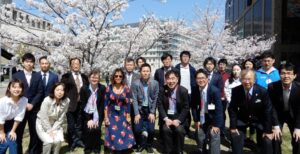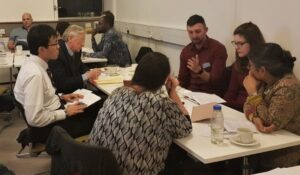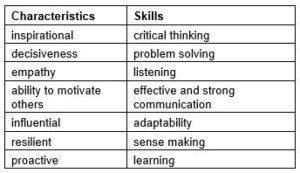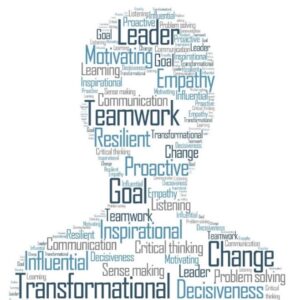Risk, Crisis, Disaster and Development Management (RCDDM): Future Leader Programme
By: Mrs Denise Corsel, Dr Nibedita S. Ray-Bennett, Dr Hideyuki Shiroshita and Dr Paul Reilly
Introduction
Disasters cause critically damaging human, social, financial, natural, and physical losses. In order to mitigate their impacts, there is now a global consensus amongst national and international actors that policies and programmes should be linked to support human existence. This is reflected in the ‘Sustainable Development Goals (SDGs) 2015-2030’ and the ‘Sendai Framework for Disaster Risk Reduction 2015-2030’. With this global consensus and the need to reduce disaster risks and disaster losses, there has been an increasing demand for specialised professionals and future leaders to understand the nuances of risk, crisis, disaster and development and their interfaces.
A key goal, and what is yet to be seen, is how these global trends, national needs, and everyday realities of disaster-affected and vulnerable communities are integrated into professional development programmes taught within Higher Education Institutions in countries vulnerable to natural hazards, such as Japan and the UK, to build the capacity of students, professionals, and their leadership skills.
To progress this vision, the Universities of Kansai, Sheffield, and Leicester undertook a joint research project (funded by Kansai University’s Grant-in-Aid for the Promotion and Upgrading of Education and Research) to study and recommend a Future Leader Programme that might be required to improve students’ and professionals’ learning and leadership skills for the effective management of risk, crisis, disaster, and development. Three objectives were set for this study:
- To identity and map the number of courses/programmes on risk, crisis, disaster and development management (RCDDM) offered by the Higher Education Institutions in the UK and Japan.
- To identify indicators for a quality Future Leader Programme in line with the Sustainable Development Goals and the Sendai Framework.
- To engage with key stakeholders to validate the indicators and explore the meaning of a future leader.
Methodology
The duration of this project was 22 months (31 May 2017 – 31 March 2019) and was undertaken in three inter-related phases:
Phase 1 – Mapping RCDDM Courses/Programmes (July 2017-October 2017): This involved systematically reviewing each Higher Education Institution, RCDDM courses, module content, and the Times Higher Education databases in the UK, and the KAKEN database (an academic research fund database) in Japan.

Phase 2 – Identifying Indicators (October 2017-December 2017): This involved a desk-based literature review on ‘quality’ education and a content analysis of the Sustainable Development Goals and the Sendai Framework.
Phase 3 – Engaging with Key Stakeholders (January 2018-December 2018): Two stakeholder workshops were conducted; one in Osaka and the other in Leicester (see Figures 1 and 2).

The stakeholders consisted of students, graduates, course and module leaders, and practitioners. After the workshops, six purposive interviews were conducted with three students and three established academics.
The purpose of the workshops and the interviews were to validate the identified indicators and to explore the meaning of a future leader programme.
Key Findings Specific to Each Research Objective
Objective 1 – Mapping RCDDM Courses/Programmes: As of October 2017, there were a total of 166 Higher Education Institutions in the UK that could award degrees (Crown, 2017), of which 48 Institutions offered courses/programmes in RCDDM. There were a total of 81 courses/programmes related to RCDDM (some Institutions had more than one course/programme in RCDDM). There were 17 BSc/BA degree level RCDDM courses; 49 MSc/MA degree level RCDDM courses; 8 distance learning courses in RCDDM; 10 short term courses relevant to RCDDM; and 3 CPD certified courses in RCDDM.
In Japan, the Higher Education Institutions were searched in a different manner. The methods of mapping was originally planned to be the same in the UK and Japan but there were two main difficulties: (i) the difference in the number of institutions (166 Higher Education Institutions versus 777 universities); and (ii) the access to the information in Japan is more challenging since universities do not have a course directory or search mechanism on their websites. Subsequently, it was decided to use the KAKEN database, which is the biggest governmental, academic research fund administrated by JSPS in Japan. It was found that in October 2017, there were 777 universities, of which 3,375 had KAKEN funded projects related to risk and 233 related directly to disaster risk reduction. Also, it was found that the Disaster Prevention Research Institute at Kyoto University had received the highest number of KAKEN projects.
Objective 2 – Identifying Indicators: From the content analysis of the Sustainable Development Goals and the Sendai Framework, it was found that Goals 4 (Quality education), 11 (Sustainable cities and communities) and 13 (Climate action), and the Sendai Framework’s Priorities for Action 1 (Understanding disaster risk) and 3 (Investing in disaster risk reduction for resilience) were most relevant. Some of the indicators for a quality Future Leader Programme included: i) qualified teacher; ii) global citizenship education; iii) students from and scholarship opportunities for developing countries; iv) an environment where sharing experiences and lessons learned are encouraged; v) vocational skills; and vi) a tailored curriculum.

Objective 3 – Engaging with Key Stakeholders: There was an overall consensus amongst the stakeholders on the indicators that had been identified by the research team. The stakeholders defined a ‘Future Leader’ for RCDDM as an individual who brings about change to enrich life standards and communities’ abilities to manage risks, crises, disaster and development through social influence. They believed that a ‘Future Leader’ should have the following skills: i) critical thinking, ii) problem solving, iii) listening, iv) effective communication, v) adaptability, vi) sense making, and vii) learning (see Table 1 and Figure 3 for a visual representation). Additionally, a ‘Future Leader’ who can implement the relevant Sustainable Development Goals and Sendai Framework’s Priorities merits a transformational leader or leadership. This is a leader who identifies the needed change, creates a vision to guide the change through inspiration and executes the change in tandem with committed members of the group. Subsequently, in the process, the transformational leader or leadership transforms their followers through inspiration and motivation.
Conclusion

Our engagement with the stakeholders led to the following recommendations for a Future Leader Programme:
- A course that is transdisciplinary.
- A course that interconnects and demonstrates how risk, crisis, disaster and development management are overlapping.
- A short Continuing Professional Development course that can be delivered virtually.
- A balanced course that incorporates theoretical knowledge and building of practical skills, through exercises, drills etc.
- A course that draws on real life case studies and scenarios, field trips, and work placements.
- A course that has a scope for a range of qualified guest lecturers/experts from the industry to teach the course.
- A course with the ability to attract professionals working in various development and disaster risk reduction/management fields to sign up and study alongside students and future leaders; this mixing of existing and potential leadership is viewed as particularly powerful.
Topics that a quality RCDDM Future Leader Programme can include in its curriculum in order to enhance the students’ and professionals’ knowledge and skills (as identified in Table 1) include:
- Disaster risk management cycle
- Introduction and interconnections of the Sendai Framework, Sustainable Development Goals, and ICPP, and explanation of their importance in the real world.
- Mainstreaming tools, and pathways to draw synergies and implementation of the Sendai Framework, Sustainable Development Goals, and ICPP in different sectors.
- Climate change education and sustainable development in relation to disaster risk reduction.
- Linking disaster risk reduction/management and climate change with development and socio-economic challenges from village to global scales.
- Building resilience of communities, including the poor and vulnerable.
- Vulnerability concepts because they are applicable to both development and disaster studies.
- A small element of basic ICT skills, such as hazard mapping.
- Critical thinking and analysis.
- Case studies with problem solving activities.
These curriculum recommendations assist with capacity building and contribute towards the goal of integrating the global trends, national needs, and everyday realities into professional Higher Education Institutions development programmes.
Acknowledgment: We would like to thank Professor Michael Petterson and Dr Christian Morgner for reviewing this paper, and for their constructive feedback.

